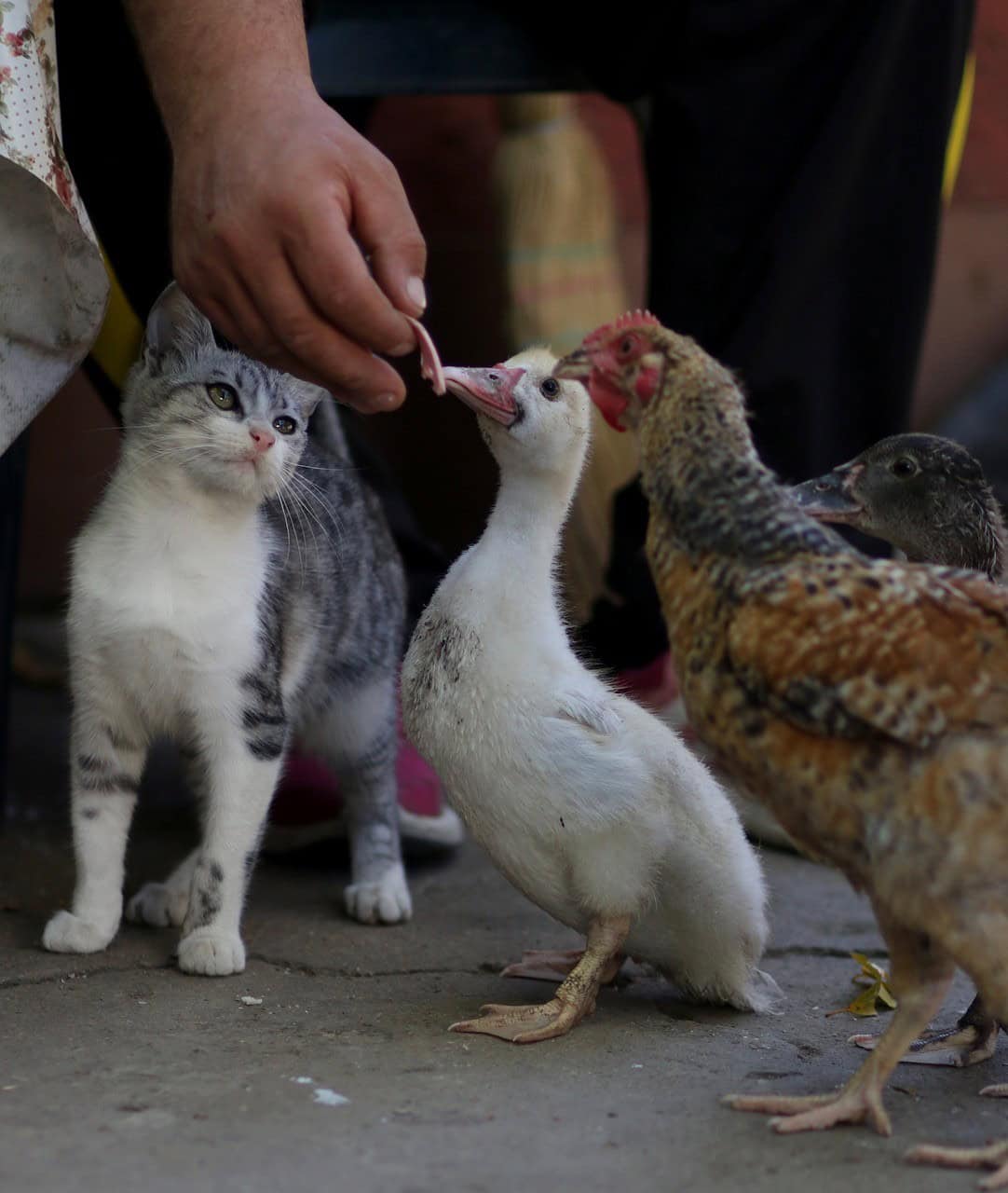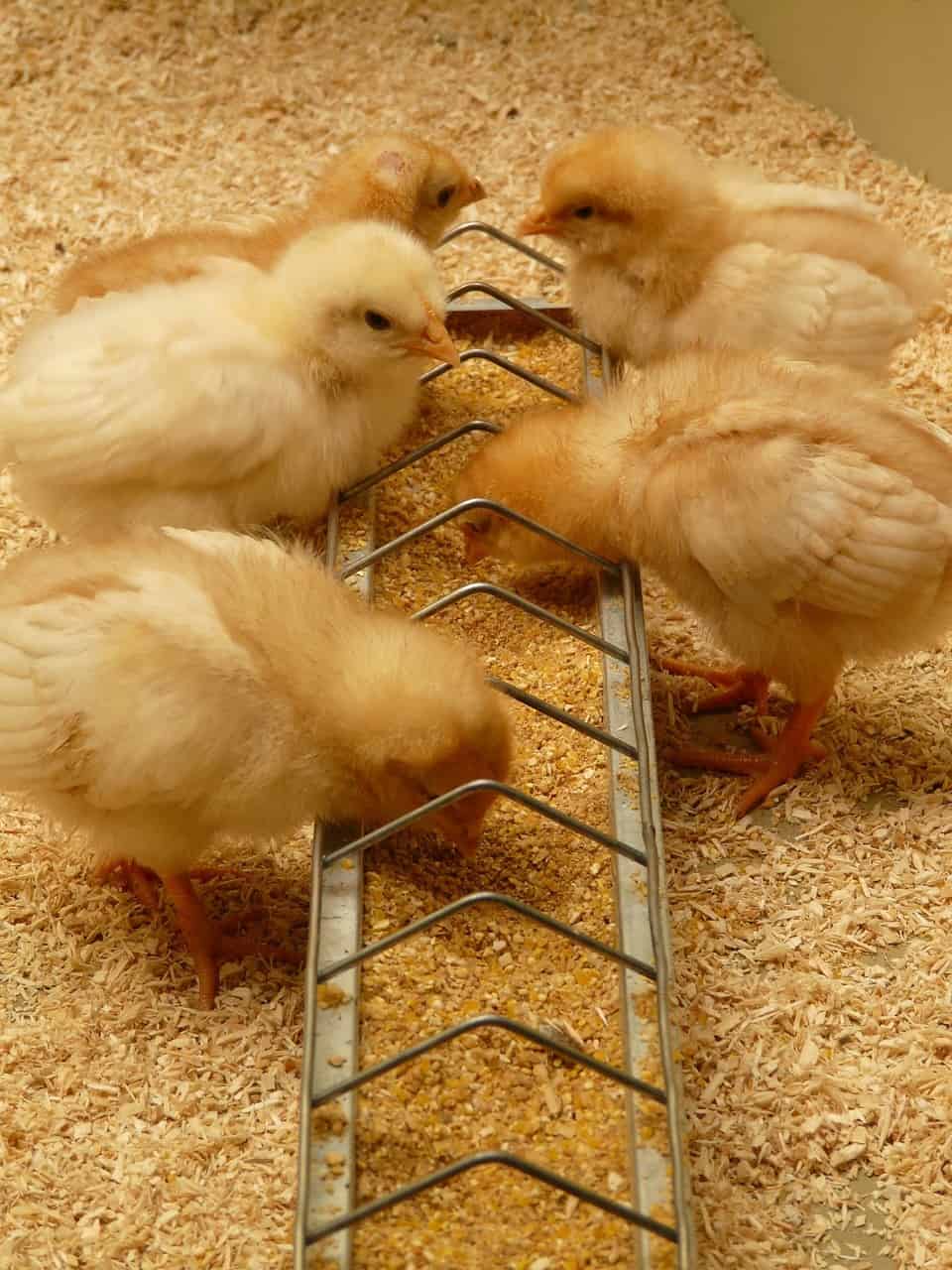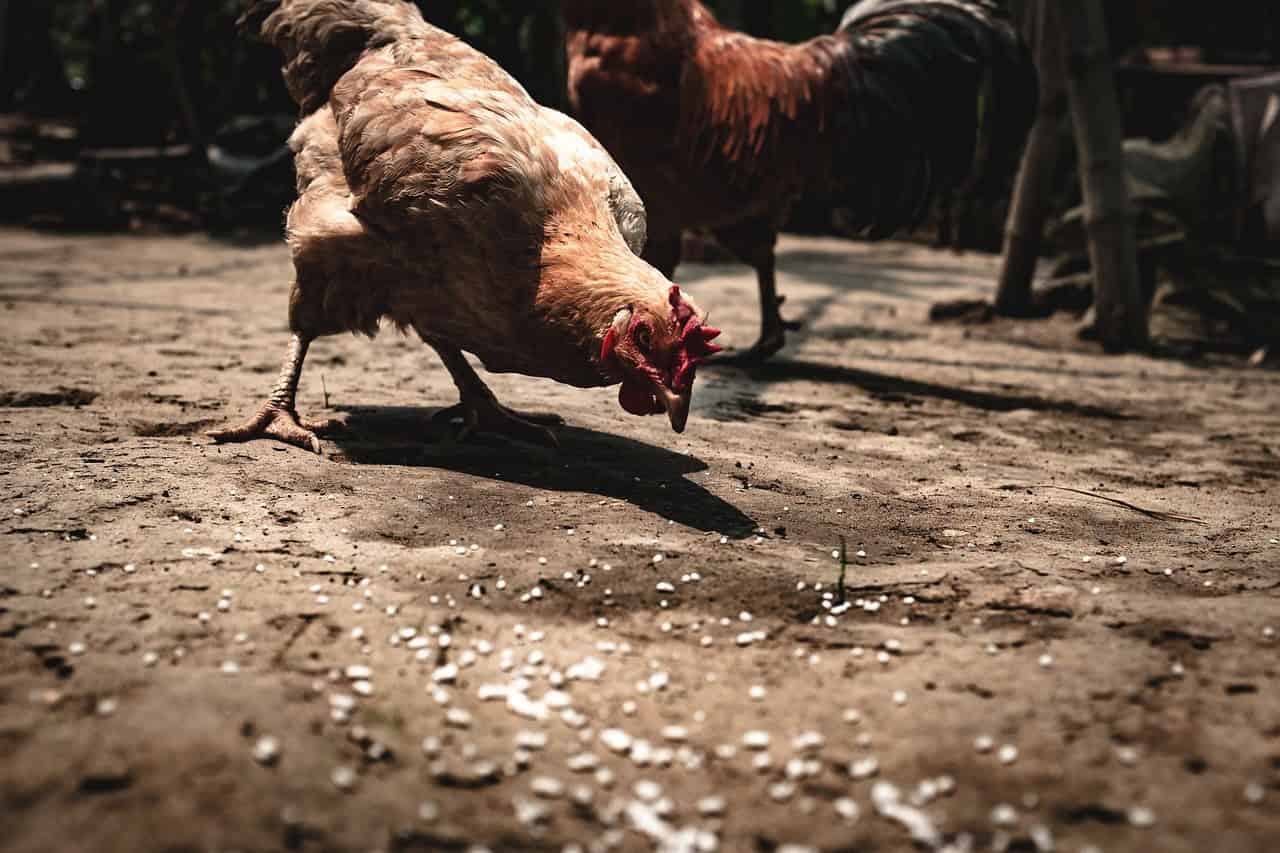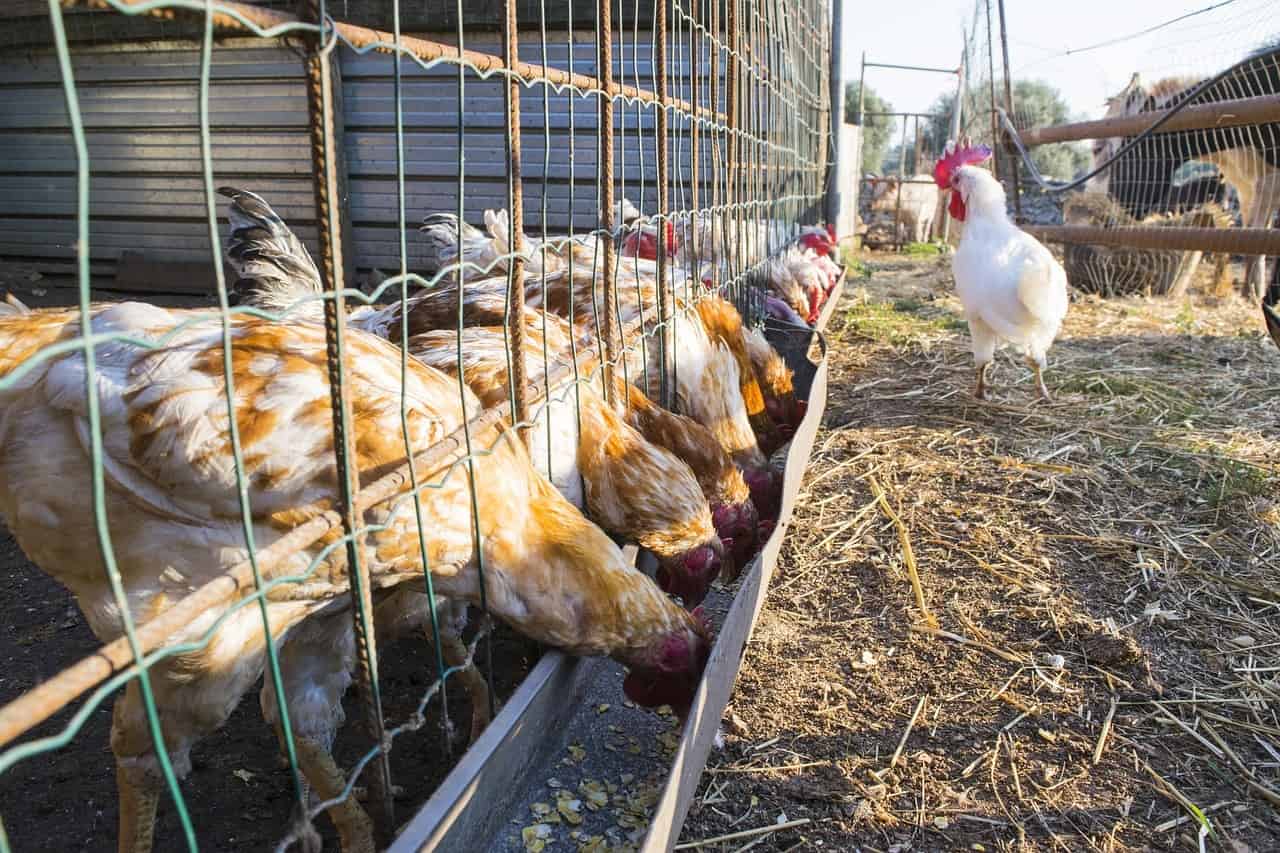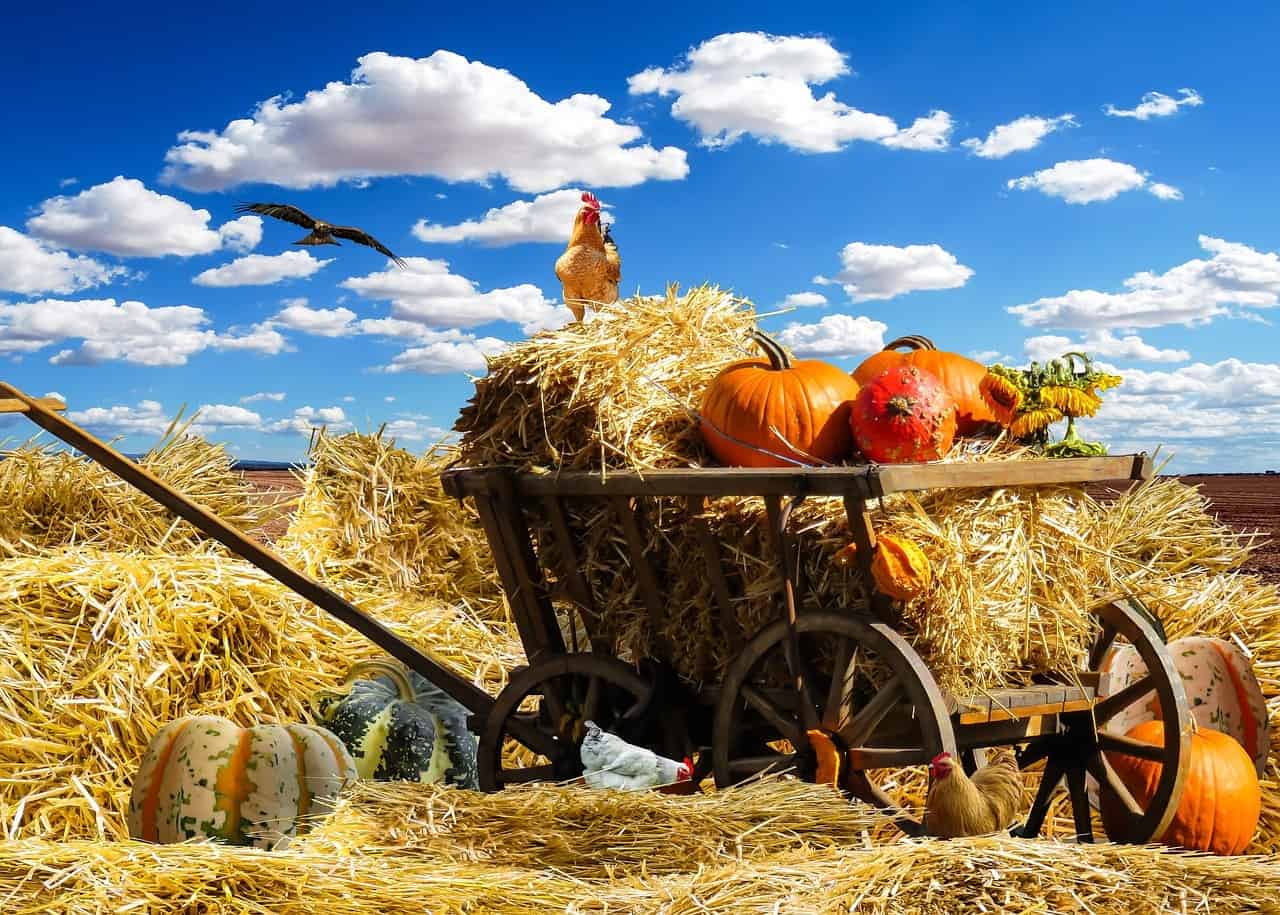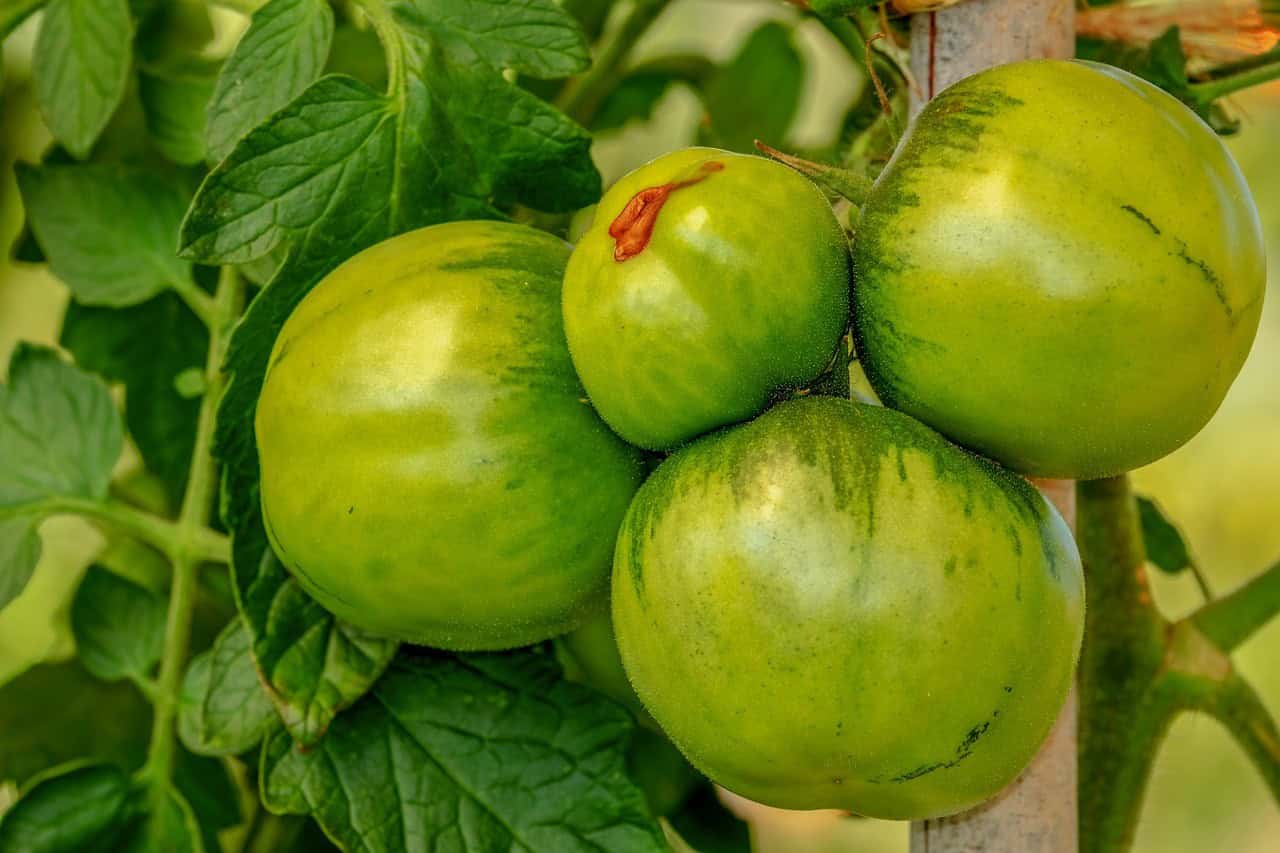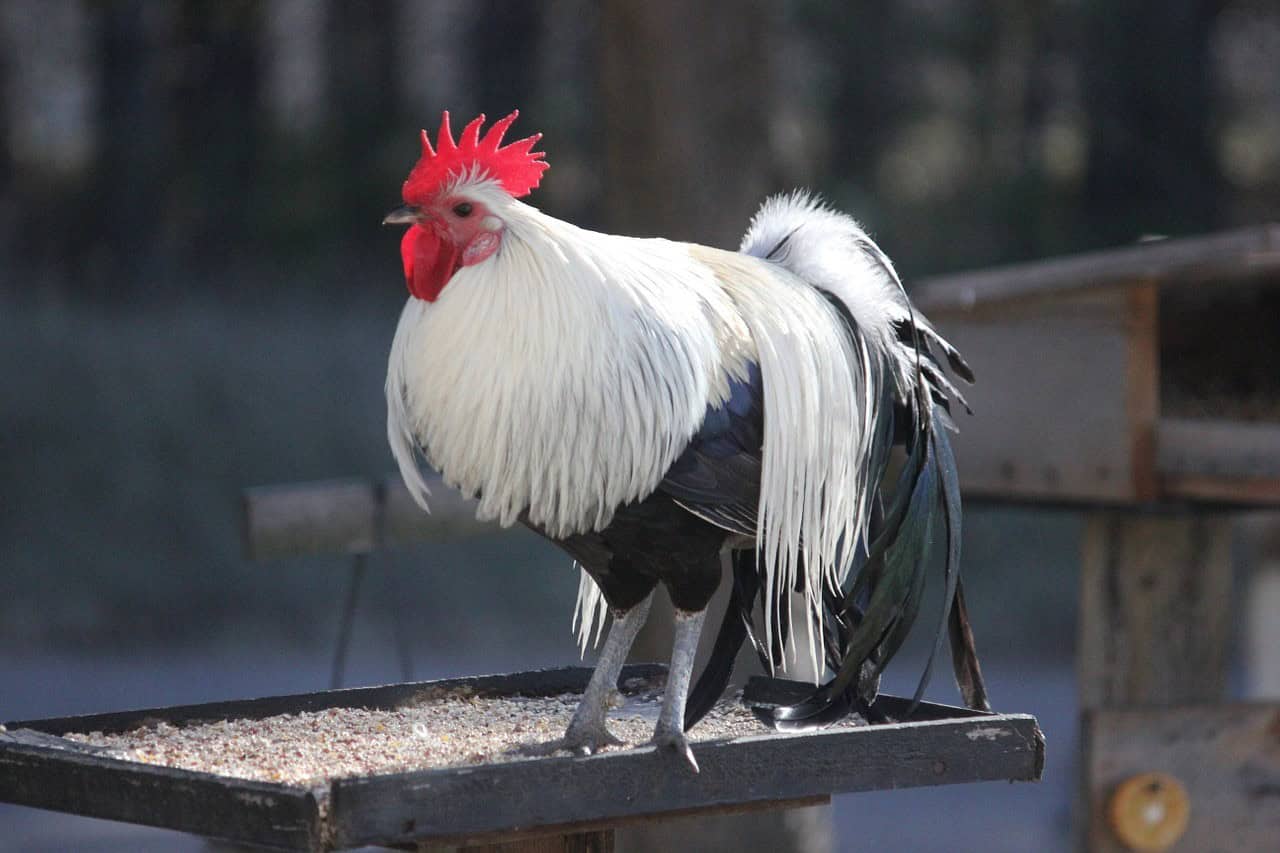When embarking on the journey of raising chickens, it’s crucial to have all the necessary components in place before welcoming your feathered friends. While you may have already constructed a cozy coop and run for your birds, it’s equally important to ensure you’re stocked with the fundamental supplies, including feed and supplements.
To guarantee a harmonious and healthy flock, take a few minutes to brush up on the following essential aspects: feeding and watering techniques, fulfilling nutritional needs with cost-effective homemade options, and keeping your chickens happy with an array of treats. By doing so, you’ll be well-prepared to provide your birds with the best possible start in their new home.
Prepping for Your Baby Chicks
When bringing home baby chicks, it’s crucial to prepare thoroughly to ensure a smooth transition for these temperature-sensitive little ones. Failing to do so can lead to dehydration, malnutrition, and infection, which can be devastating if not addressed promptly. In fact, improper care can result in the loss of life before they even reach their new home. To prevent this, it’s essential to stock up on the following essential supplies before welcoming your baby chicks for the first time:
Brooder Box
The initial eight weeks of a chick’s life are pivotal in determining their overall health and vitality. During this period, a designated enclosure, commonly referred to as a brooder box, serves as their first home. While it is possible to purchase a specialized brooder box, you can also repurpose a large cardboard box or an old washbasin as a suitable alternative.
Once you’ve identified the perfect makeshift brooder, you’re ready to welcome your baby chicks and provide them with a safe and comfortable environment.
Bedding
When it comes to setting up a brooder box for your new arrivals, one crucial aspect to consider is the bedding or litter. A popular and cost-effective option is pine shavings, which not only suit your chicks’ needs but are also easy to clean. In contrast, cedar shavings should be avoided due to their unpleasant odor and potential respiratory issues they may cause in young chickens.
Thermometer
To achieve optimal conditions for your chicks’ development, it’s crucial to maintain a precise temperature in the brooder box. The most effective way to monitor this is by placing the thermometer under the heat source, such as a bulb or heat lamp. This ensures you’re getting an accurate reading and can make any necessary adjustments to create a comfortable environment for your young birds.
Bulb or Heat Lamp
When introducing baby chicks to their new environment, it’s essential to provide a reliable source of warmth until their natural insulation develops. One option is to purchase a heat source from a local chicken feed store or supplier near your residence. Once you’ve set up the heat source in the brooder box and received your chicks, ensure the enclosure reaches an ideal temperature range of 70-90°F.
Note that breed-specific variations may exist, so it’s always advisable to consult with a veterinarian before transferring the chicks to their new home.
Feeder and Waterer
When stocking up at your local store, don’t forget to inquire about the essentials for feeding and watering your baby chicks. You’ll find a range of feeder and waterer options available, which we’ll delve into in greater detail later on. As an interim solution, if you can’t procure a dedicated waterer, a heavy-duty glass ashtray can serve as a makeshift alternative.
To ensure the health and well-being of your new arrivals, be sure to fill the chosen vessel with fresh water and regularly inspect it for cleanliness.
Starter Feed
When it comes to feeding baby chicks, local feed stores offer specialized starter feeds that typically consist of mash or crumbs. Simply ask for ‘starter feed’ and you’ll receive the right product. However, if you forget to purchase one but your chicks have just arrived, don’t leave them hungry. In a pinch, you can create a makeshift starter feed for 1-2 days by blending whole grains like rice, barley, wheat, or oats in a blender.
Be sure not to over-process the grains, as they should retain some texture and not become a powder. Leave these coarsely blended grains in front of the chicks in their brooder box, where they can eat at their leisure.
Why Should You Feed Your Chickens Right?
When it comes to feeding your chickens, it’s crucial to consider their nutritional needs in today’s modern environment. In the past, many chicken keepers let their birds roam freely and supplement their diets with grains spilled by other animals like goats or sheep. However, this scenario is no longer practical for most backyard chicken enthusiasts.
As a result, chickens are now more confined to their coops or runs, where they may struggle to find sufficient nutrition to support healthy growth and egg production. Providing a well-balanced feed is essential to ensure your flock remains healthy and productive. In the past, it was common for backyard chickens to lay a moderate number of eggs due to limited nutrition.
However, modern chicken keepers often strive to optimize their flocks’ egg-laying capabilities, which highlights the need for high-quality feeds that meet their birds’ nutritional requirements. While some people may suggest allowing your chickens to forage freely, this approach can actually lead to unhealthy eating habits. Consider your backyard chickens as children who may not know what foods are best for them.
They might develop a preference for a single type of feed and overindulge, potentially leading to digestive issues. To avoid these problems, it’s more effective to provide your chickens with a nutritious feed that meets their dietary needs and keeps them satisfied.
Chicken Digestive System 101
While providing your chickens with the best nutritional feed can be incredibly rewarding, it’s not uncommon to encounter unexpected issues. If you’re suddenly concerned about a chicken exhibiting unusual behavior or symptoms, it’s essential to understand the potential underlying causes. One common scenario is that a chicken may struggle with digesting their food, which can lead to a range of digestive problems.
Before attempting to help your flock recover, it’s crucial to have a basic understanding of the chicken’s digestive system. By grasping the fundamental principles of how chickens process and digest their food, you’ll be better equipped to identify whether any issues are normal or indicative of a potential problem.
Crop
The crop, resembling a pouch in shape, plays a crucial role in a chicken’s feeding process. As the bird takes up food in its beak, it transfers the nutrients to this specialized compartment, which expands due to its elastic nature as the chicken feeds. In essence, the crop functions like a food pipe, serving as the initial stage of the chicken’s digestive system. It’s vital to prioritize crop health to prevent any potential gastrointestinal issues.
Proventriculus
When food leaves the crop and begins its journey through the digestive system, it enters the proventriculus – often referred to as the chicken’s stomach. This is where the real breakdown of nutrients starts to occur, thanks to the presence of digestive enzymes that help to further break down the food.
Gizzard
The gizzard, an oval-shaped sac composed of robust muscles, plays a crucial role in the digestion process of chickens. After the proventriculus has processed the incoming food, it travels to the gizzard where stored grit is utilized to grind down the particles. This remarkable mechanism is reminiscent of our own teeth, which work tirelessly to break down our meals into manageable morsels.
As the muscles contract and release, they work in tandem with the grit to pulverize the ingested materials, much like the way our jaws manipulate food for efficient digestion.
Intestines
Once the food has been digested and broken down into smaller particles, it’s time for the chicken’s body to start absorbing those vital nutrients. This process begins as the partially digested meal is redirected towards the intestine, where specialized walls are designed to absorb the goodness within. As the intestines do their job, they extract the essential minerals, vitamins, and other valuable compounds from the food, readying them for distribution throughout the chicken’s body.
Cloaca
In the natural process of a chicken’s digestive system, waste disposal is an essential function. The solid and liquid waste are eliminated through the cloaca, a multi-purpose opening used by chickens for both excretion and reproduction. Interestingly, this process takes around 2.5 hours from the time food is consumed until it is finally expelled as waste.
Common Digestive Problems
Before addressing potential digestive issues in chickens, it’s essential to understand the normal functioning of their crop. A full crop usually occurs after a chicken has eaten during the day, as food is stored within it until nightfall. Conversely, an empty crop in the morning can be a sign of a healthy digestive system. As the chicken eats throughout the day, the crop fills up again and then empties the following morning, marking a normal cycle.
However, if a chicken’s crop fails to empty, digestive problems may arise. In such cases, your flock might exhibit symptoms like…
Sour Crop
Sour Crop in chickens occurs when a yeast infection develops in the crop, typically due to undigested food remaining in the area. This can happen when the chicken consumes substances that are difficult to digest, such as rubber bands, plastic, or long grasses, or if it’s fed an antibiotic that causes a secondary infection. Other factors like moldy feed, inadequate grits, and excessive bread consumption can also contribute to Sour Crop.
The condition is characterized by a large, squishy crop, unpleasant odor from the beak or mouth, smelly liquid discharge, and lethargic behavior. If left untreated, Sour Crop can be fatal, so it’s crucial to seek professional help immediately. Treatment involves a natural diet rich in probiotics, fiber, and antioxidants. Feeding dried or fresh oregano, plain yogurt, or fresh garlic can help alleviate symptoms. In severe cases, veterinary intervention may be necessary.
To prevent Sour Crop, monitor your chicken’s crop regularly and take prompt action if you notice any signs of impaction. Preventing the condition involves limiting bread and similar carbohydrates in their feed. Apple cider vinegar, which possesses anti-fungal properties, can also be added to their water (one tablespoon per gallon) on a weekly basis.
Impacted Crop
When a chicken’s crop becomes impacted, it can be a frustrating and potentially serious issue for backyard flock owners. This occurs when food accumulates in the crop instead of moving to the stomach, causing discomfort and health problems. The telltale signs include a firm and large crop (similar in size to a tennis ball), excessive thirst, lethargy, and refusal to eat feed.
Impacted crops are often caused by solid substances like dried grass or straw getting stuck in the crop, tangling with food and blocking its natural function. Fortunately, there are steps you can take to treat an impacted crop. The first step is to withhold food until the issue is resolved, as the chicken’s crop is already filled with undigested food. However, make sure your chicken has access to plenty of water, even if it refuses to drink.
You can also force-feed your chicken with water to help clear the blockage. Additionally, offering granite grit to your chicken may help facilitate digestion. If you’ve taken these steps and still see no improvement, it’s best to consult a veterinarian for further guidance. To prevent impacted crops from occurring in the first place, consider limiting your chickens’ access to long grass or dead grass when they’re free-ranging.
Regular veterinary checkups can also give you peace of mind, ensuring that your flock is healthy and thriving. Finally, incorporating granite grit into their feed can help keep their digestive system running smoothly.
Types of Feed for Your Backyard Chickens
When choosing a feed for your chickens, it’s essential to understand the characteristics, advantages, and disadvantages of each option. To make an informed decision, take some time to research the various types of feed and their corresponding benefits and drawbacks.
Commercial Feed
When it comes to feeding your small flock of chickens, one option is to use commercial feed products designed specifically for animal consumption. These feeds are often classified into categories like Animal Protein Products, Plant protein products, Fat and Oil Products, Non-protein Nitrogen Supplements, Processed Grain by-products, Molasses Products, Vitamin Supplements, and Mineral Supplements.
Commercial feeds can be convenient and balanced, providing your chickens with the nutrients they need. One of the easiest ways to feed your small flock is to purchase complete rations from a store, which come in forms like crumbles, pellets, or mashes. These pre-mixed formulas eliminate the need for you to worry about selecting individual ingredients. The advantages of commercial feeds are undeniable.
They save time and effort, as you don’t have to spend hours mixing and preparing feed for your chickens. Additionally, they provide a balanced diet that meets your flock’s nutritional needs. However, there are also some drawbacks to using commercial feeds. One major concern is the cost – homemade feeds can be more budget-friendly if you know what goes into them. Some commercial feeds may also contain additives or compounds that could potentially harm human health.
For example, arsenic-based additives are used to promote growth and kill parasites, but they have been linked to various types of cancer in humans. Another consideration is the potential quality of the feed itself. Poor-quality feed can result in poor-quality meat, which might not be ideal for your flock’s overall health. Finally, some commercial feeds come in pellet form, designed to encourage birds to eat more at once and reduce the need for multiple trips to the feeder.
While this may seem convenient, many experts believe that giving chickens more exercise by allowing them to forage freely can actually improve the quality of their meat. When selecting a commercial feed, it’s essential to consider the specific needs of your flock. For example, layer breed chickens require a starter ration containing 20% protein, while meat chickens need a high-protein diet with around 22-24% protein for the first six weeks.
Some brands may also offer different ingredients in different regions, so be sure to check the label. Additionally, avoid adding extra calcium or minerals to your commercial feed, as excess calcium can lead to kidney failure.
Medicated Feed
Medicated feeds for chickens contain a blend of veterinary medications that require a prescription from a veterinarian before use. This type of feed is often the most effective way to administer medicine to your flock, particularly in combating diseases such as coccidiosis. Formulated specifically for chickens, medicated feeds help young chicks build immunity and fight off cocci oocysts.
The main active ingredient, Amprolium, blocks thiamine uptake, which can lead to ‘splay leg’ condition if not monitored in young birds.
Pros of using medicated feeds include the ability to prevent diseases and reduce mortality rates. However, it’s essential to note that medicated feeds may nullify the effect of vaccinations against coccidiosis. Additionally, traces of medicine can find their way into human food, and extensive antibiotic use has led to the growth of resistant pathogens.
Cons include the potential for medicated feed to interfere with vaccination efforts and the risk of antibiotic resistance. Furthermore, medicated feeds are not a substitute for treatment in the event of an outbreak, nor should they be used to treat respiratory issues or other diseases.
Tips for using medicated feeds effectively include stopping use at 18 weeks for layers or two weeks prior to slaughter, as well as only using it for prevention and not as treatment.
It’s also crucial to remember that medicated feeds are specifically designed for coccidiosis control and should not be used for other purposes.
Experts recommend relying on natural remedies such as sunshine, good nutrition, and a healthy environment as the best approach to maintaining chicken health. If you do need to use medicated feed, ensure you follow label instructions and guidelines carefully.
Homemade Feed
Poor quality chicken feed can lead to stunted growth, low egg production, and even health issues in chickens. To avoid these problems, many poultry producers have started formulating their own homemade chicken feeds. This approach allows them to control the ingredients and ensure a nutrient-rich diet for their flocks. The common ingredients used in making homemade chicken feed include maize, maize germ, sunflower seeds, fish meal, cottonseed cake, and soya beans.
Some farmers also add essential nutrients like vitamins, minerals, and micronutrients to meet the dietary needs of their chickens.
The benefits of making homemade chicken feed are numerous. It allows poultry producers to provide top-notch quality feed for their birds, which is especially important in today’s commercial farming industry where standards have been compromised due to government regulations.
Additionally, homemade feeds can be adjusted according to the specific needs of each flock, resulting in cost savings and improved bird health. However, making chicken feed at home also requires some knowledge of chicken nutrition and a willingness to invest time and effort into the process.
While there are several drawbacks to preparing homemade chicken feed, the advantages far outweigh the disadvantages.
One major benefit is that it can be made using locally sourced ingredients, which reduces costs significantly. For example, using lentils, barley, peanuts, wheat bran, and quinoa as ingredients can help save up to 50% of the cost per pound of feed. Furthermore, making smaller batches at a time ensures that the feed remains fresh and retains its nutritional value.
When formulating homemade chicken feed, it’s essential to keep in mind the specific dietary needs of different categories of chickens. For example, layer hens require a minimum of 18% crude protein in their diet. It’s also important to be mindful of potential allergens like soy and fish meal, which can have negative impacts on bird health if not used properly.
How to Cut the Cost of Feeding Chickens
The struggle is real when it comes to feeding your backyard chickens. It’s disheartening to discover that the eggs they produce are costing more than those from a local store. Despite the rising costs of chicken feed, there are ways for keepers to provide their flock with top-notch, nutritious, and organic feed without breaking the bank.
The solution lies in making a few adjustments.
Grow Fodder
To cultivate nutritious chicken feed, start by soaking and sprouting wheat seeds in a container for 12-24 hours. This initial step sets the stage for the growth of your fodder. Next, transfer the seeds to a tub with holes drilled in it for proper drainage. Add the seeds to the tub and water them daily. As you wait patiently over the next seven days, you’ll witness the incredible transformation as the wheat sprouts into a lush, green fodder.
Your chickens will soon be enjoying this wholesome feed, rich in nutrients and free from additives. Another affordable option is Water Hyacinth, which can also be used to create a healthy and cost-effective chicken feed.
Provide a Free-Range Space or Pasture to the Chickens
When it’s safe for your chickens to roam freely under your watchful eye, they can discover their own food sources. Allow them to explore during the day, where they can feast on a diverse diet of grasses, bugs, weeds, seeds, sunflowers, and even tomatoes. This varied menu will provide the essential nutrients from oyster shells.
However, if your space is limited or you’re not comfortable with an open-range setup, consider investing in a chicken tractor.
These innovative devices enable foraging and feed collection, providing a safe and controlled environment for your flock to thrive.
Table Scraps
When it comes to feeding your flock, chickens are surprisingly efficient at consuming a wide range of scraps – with one notable exception: meat. As a result, repurposing leftover lunch as chicken feed can be a cost-effective and eco-friendly solution. Moreover, by providing this nutritious snack, you’ll simultaneously address the issue of food waste, ensuring that every bite counts.
Nevertheless, it’s essential to maintain portion control to prevent overfeeding, which could lead to unwanted weight gain in your feathered friends.
Their Egg Shells
When incorporating leftover egg residue into your flock’s diet, don’t overlook the humble eggshell. By repurposing these shells, you can create a nutritious and calcium-rich additive for your chicken’s feed. Simply grind the shells into a fine powder and mix them with their regular meal. This creative reuse of resources not only supports your birds’ health but also reduces waste, making it a win-win for both you and your feathered friends.
Other Homemade Chicken Feed Options
To explore a wider range of chicken feed choices, we recommend taking a look at our previous posts on affordable and high-protein feed options. These resources will provide you with a detailed overview of various feed types to help you make an informed decision for your flock.
How to Prepare Chicken Feed at Home
To create a simple and effective homemade chicken feed, all you need is the right combination of ingredients. The key is having the essential components on hand and mixing them together in the correct proportions. For a basic recipe, consider combining: 30% wheat, 10% oats, 30% corn, and 20% peas. You can also add Aragonite and Kelp according to your preference and the number of backyard chickens you’re feeding. Simply adjust the quantities based on the size of your flock.
Tasty Treats for Chickens
While it’s easy to imagine a chicken’s life as a monotony of pecking and scratching, the truth is that our feathered friends crave variety just like humans do. Occasional treats are essential for keeping them happy, healthy, and safe. Not only do they provide a mental boost, but they also serve as a vital substitute during harsh winter months when plants are buried under snow. Yet, it’s crucial to pair these indulgences with grit in a separate feeder to ensure proper digestion of the goodies.
Fruits
Chickens have a natural affinity for a particular type of food that’s not only a hit with humans but also a favourite among your feathered friends. These treats are rich in vitamins and low in fat, making them an excellent reward. One way to keep your chickens happy and healthy is by providing them with access to fallen fruit. You can do this by letting them forage freely in an orchard or by planting a few fruit trees near the coop.
As they peck away at the fallen fruit, you’ll be giving them a nutritious snack that’s sure to bring a smile to their beaks.
Cabbage, Broccoli, and Cauliflower
When it comes to winning over kids, broccoli often falls short. However, if you find yourself with an unexpected surplus, consider sharing some with your feathered friends – they’ll surely appreciate the treat! As it turns out, this super veggie group has a lot to offer: cabbage, in particular, is packed with calcium (6.3% being the highest among the top three). Why not get creative and combine broccoli with grated carrot and cucumber slices?
You can whip up a healthy green salad that your beloved pets will love just as much.
Berries
To attract chickens to your backyard, consider planting berry bushes, which are not only nutritious but also provide a delicious treat for them. These bushes are rich in essential vitamins like A, B complex, and C, as well as the antioxidant beta-carotene. By incorporating a few of these bushes into your yard, you’ll be providing your feathered friends with a healthy snack that’s sure to please.
Pumpkins
When it comes to providing nutritious treats for your flock, pumpkins are an excellent choice. Not only do they offer a rich source of protein, but they’re also packed with other essential vitamins and minerals. One great way to serve them is to leave the pumpkin whole, allowing your chickens to peck at it from the outside in. Simply carve out a large hole on one side, giving them access to the delicious insides.
This not only keeps things interesting for your birds but also helps to prevent overfeeding and ensures they’re getting the most out of their treat.
Melon and Watermelon
When it comes to providing sustenance for your chickens, you may be surprised to learn that giving them watermelon is not only acceptable but also beneficial. The reasoning behind this unconventional practice is rooted in the importance of staying hydrated. Just as humans need access to clean drinking water, chickens require adequate hydration to thrive. One way to achieve this is by offering a watermelon bowl and allowing your flock to graze at their leisure.
Oatmeal
Indulge in this wintertime delight, where the addition of garlic and fresh herbs amplifies its already impressive nutritional profile. As a rich source of vitamins and essential nutrients, this sweet treat is truly deserving of your affection.
Foods to Avoid at All Costs
While it’s true that chickens are opportunistic eaters and will consume a wide variety of foodstuffs, it’s crucial to recognize that not everything is suitable for their consumption. In fact, certain edibles can prove toxic or even fatal to your backyard flock. To ensure the health and well-being of your feathered friends, it’s essential to be aware of these deadly foods and avoid them at all costs. Some of the most hazardous substances include…
Moldy Food
While some types of mold can be beneficial, it’s challenging to distinguish between harmless and harmful growths on soft fruits. As a precautionary measure, it’s generally advisable to steer clear of any visible mold on these types of produce, as the risks associated with consumption often outweigh any potential benefits.
Green Potatoes and Green Tomatoes
Potatoes contain two toxic compounds called solanine and chaconine, rendering them harmful to chickens. It’s essential to note that cooking doesn’t alter the toxicity of these substances, meaning raw or cooked potatoes pose a risk to your flock if consumed.
Dried/Raw Beans
Kidney beans are particularly notorious for their toxic effects on chickens, posing a significant risk of severe illness or even mortality. The culprit behind this danger is a deadly compound called phytohaemagglutinin, which is naturally present in these legumes. This toxin can have devastating consequences when ingested by chickens, highlighting the importance of keeping them out of reach to ensure the health and well-being of your flock.
Salty Foods
While it’s true that some amount of salt is necessary for a chicken’s overall health, consuming too much salt can have detrimental consequences. In fact, excessive salt intake can lead to the development of salt poisoning in chickens. A crucial aspect to consider is the acceptable level of salt in drinking water – for chickens, this threshold stands at around 0.25%. Any amount exceeding this mark can pose a risk to their well-being.
Chocolate
While indulging in sweet treats may seem harmless, it’s essential to consider the potential risks they pose to our furry friends. Consuming chocolate, in particular, can have severe consequences for your pet’s cardiovascular health, potentially even leading to heart attacks or other serious complications. It’s crucial to prioritize their well-being and reserve those decadent chocolate cakes for yourself, ensuring a guilt-free indulgence.
Parts of Avocado
While avocados are a popular and nutritious addition to many diets, they do contain a unique compound that can have unintended consequences. Specifically, persin, a toxin found naturally in avocados, has been shown to cause cardiovascular issues in chickens. This may not be a concern for human consumption, but it’s an important consideration when using avocado-based products in animal feed or considering the potential impact on farm-raised flocks.
What You Need to Know About Chicken Feeders
A fundamental component of any successful backyard chicken-keeping operation is the humble poultry feeder. This simple yet ingenious device provides a convenient and efficient way for your feathered friends to access their sustenance, allowing them to graze as they see fit. The versatility of poultry feeders is one of its most notable features, with designs ranging from compact tubular models to sprawling horizontal options that can be seamlessly integrated into the natural environment.
Whether crafted from durable plastic or robust metal, these devices cater to a wide range of needs and preferences, making them an essential tool for any chicken enthusiast. When it comes to stocking your flock, you’re spoiled for choice, with several types of poultry feeders available to suit every situation. Here are just a few examples that can help take your backyard chicken-keeping experience to the next level.
Trough
Troughs can be mounted to the side of a coop or operate independently, some featuring built-in roofs for added protection. These feeding stations offer several benefits, including allowing multiple chickens to dine in a single row and making refills easy due to their open design. The elevated sides of troughs also minimize the likelihood of feed being scratched out by chickens’ feet or beaks.
When selecting a trough, ensure it is large enough to stand on its own; if not, secure it to a stable surface to prevent tipping.
Open Container Bin
Poultry feeders with a design distinct from the trough’s elongated shape serve a similar purpose, albeit with some key differences. While they offer ease of refilling, their compact nature can lead to overcrowding issues when multiple birds attempt to feed simultaneously.
Tread-Plate Feeders
Thread-plate feeders have stood the test of time, experiencing a resurgence in popularity over the years. Despite their higher price point, they offer a significant capacity for holding dry feed – up to 10-20 kg, to be exact. The innovative pressure plate system at play involves a chicken stepping onto a plate, which triggers the opening of a lid. This allows the birds to feed freely before the lid closes once again, protecting the feed from unwanted visitors such as wild animals and rodents.
One of the greatest benefits of this type of feeder is its ability to exclude rats and other pests from accessing the feed, making it an ideal choice for open environments.
PVC Tube Feeders
While tubular and round feeders excel with pelleted or crumbled feed, they struggle when filled with mash. Many producers opt for mash due to its comparable nutritional value and affordability. However, this approach often results in clumping and uneven flow, leaving chickens underfed. The consequences include slow growth rates, flock aggression, and decreased egg production.
A more viable option is the PVC tube feeder, which can be easily replicated at home.
Its lightweight design makes it simple to attach to any wall or post. While these feeders do pose a drawback – allowing only one bird to eat at a time – a seasoned breeder would recommend installing one for every four birds. This setup also provides a secondary feeding source, helping bullied birds access food and reducing competition at the main feeder.
How to Buy the Right Chicken Feeder
When it comes to keeping chickens, selecting the right type of chicken feeder is crucial. It’s not just about providing sustenance for your flock; it’s also about promoting a harmonious and healthy environment. The wrong feeder can lead to aggressive behavior among birds, leaving some without access to essential nutrients. Moreover, an ill-designed or improperly sized feeder can result in spillage and wastage of food, ultimately driving up costs.
To ensure you’re getting the most out of your poultry feeder, be sure to consider factors such as adequate space for all chickens, ease of use, and efficient feeding mechanisms.
The Number and Size of the Birds
When scaling up your backyard flock, it’s essential to upgrade your poultry feeding setup to accommodate the growing needs of your diverse breed and size combinations. For small flocks, a standard-sized feeder may be sufficient; however, as your flock grows, you’ll need to transition to a larger capacity feeder capable of serving multiple birds with varying dietary requirements.
Physical Dimensions
When selecting a poultry feeder, it’s crucial to consider its compatibility with your existing coop setup. A feeder that can’t even fit through the coop door would be a wasted investment, rendering it useless for your flock’s needs. In this context, the feeder’s size and shape become essential factors in making an informed purchasing decision.
Easy Access of Feed for All Chickens
To ensure each chicken is properly nourished, it’s essential to provide adequate feeding options for all birds in the flock. For instance, if you have a large group of chickens but only one feeder, slower pecking chickens may struggle to get enough food, leading to hunger issues. Similarly, if your flock consists of both larger and smaller breeds, multiple feeders can be particularly beneficial.
This setup allows smaller chickens to access low-hanging feeders while larger birds can reach higher feeders, catering to their unique needs.
Frequency of Refilling
To determine the ideal feeder size for your flock, you’ll need to consider the daily feed intake of each chicken. On average, a medium-sized adult chicken consumes around 4 ounces (¼ pound) of feed per day, with this quantity varying depending on the type of feed and bird size. With this information in mind, plan accordingly when purchasing a feeder. For instance, if you have a flock of 20 chickens and opt for a 5-pound capacity feeder, you’ll need to refill it daily.
As your flock grows, so will their appetite – be prepared to upgrade to a larger feeder or purchase multiple feeders to meet the increased demand.
Spillage
While it’s impossible to completely eliminate spillage, certain feeder designs can significantly minimize the amount that ends up on the ground. One effective approach is to opt for a feeder with elevated sides, which naturally reduces the likelihood of feed being spilled. Furthermore, many feeders come equipped with a built-in barrier or restrictive top layer, effectively preventing chickens from rummaging through and scattering the feed in the process.
The Environment
When urban and rural dwellers coexist with wildlife, it’s crucial to adopt clever tactics and invest in bird-specific feeding solutions that deter unwanted visitors from devouring food intended for backyard chickens.
Watering Your Chickens
When examining chicken behavior, it’s easy to assume they don’t drink much water. However, a closer look reveals that adult chickens consume approximately half a liter of water per day in moderate weather conditions. This amount can increase significantly during hot summer months, reaching around one liter per day. The watering needs of meat birds and free-range chickens differ, with the former requiring more frequent visits to their water source due to rapid growth rates.
Free-range chickens, on the other hand, may drink less if they’ve been foraging extensively and obtaining moisture from plants and grass. To ensure adequate hydration, it’s crucial to overestimate the amount of water consumed by your flock and select a suitable waterer accordingly. Additionally, regular cleaning is essential to prevent contamination with manure and debris, ensuring your chickens always have access to clean drinking water.
Elevate your water
By taking a few simple precautions, you can significantly reduce the amount of debris that enters your chickens’ water. A crucial step in this process is keeping the waterer away from areas where your flock tends to roost or nest. If you fail to do so, you may find yourself facing an unpleasant surprise upon waking up – a water jug covered in fresh chicken droppings! This is due to the fact that chickens naturally produce a high volume of waste while laying eggs and at night.
Keep replacing the water
To maintain optimal water quality for your flock, it’s essential to ensure the water remains clean and algae-free. If left stagnant, the water can quickly degrade, leading to unpleasant odors that are unappealing to both humans and birds alike. By keeping the water fresh, you’ll provide a healthier environment for your chickens.
How to Train Your Chickens
While training chickens is not a rigid process, it’s essential to teach them to respond to you. This skill comes in handy in various situations: teaching them to feed and drink independently, guiding them into a specific area, encouraging them to return to the coop or move away from danger, and responding to your calls as needed.
Additionally, by training your flock, you can establish a daily routine for them, which includes opening and closing the coop at consistent times, collecting eggs, cleaning their manure, and providing feed at regular intervals.
Training your chickens is more effective with a small flock. As the size of the flock increases, so does the challenge in training them as desired.
To train your chickens, follow these steps:
Start by standing at a distance from your chicken(s) and holding their food behind your back. Use a pet clicker or make a distinct signal. Immediately provide the food within a second. Repeat this process twice daily for three days.
Next, hold the food behind your back again, but only offer it when the chicken is looking away from you. Make the signal through the pet clicker, and provide the food immediately.
By this point, the chicken should associate the signal with food.
The final step is to stand away from your chicken and make a signal while offering the food simultaneously. At this point, the chicken should run towards you, indicating that it’s been trained.
Conclusion to Feeding and Watering Chickens
When it comes to feeding and watering chickens, there’s a lot more to consider than initially meets the eye. If your primary goal is to save money, you may find yourself overspending on subpar food, equipment, or techniques that ultimately lead to health issues or even death among your flock.
To avoid these pitfalls, it’s essential to have all your bases covered before bringing your chicks home – including planning for homemade chicken feed.
Not only is this approach more cost-effective, but it also allows you to provide the optimal nutrients for your birds, ensuring not just their health and well-being but also the quality of the eggs and meat they produce.
In other words, by taking a proactive and informed approach to feeding and caring for your chickens, you can reap numerous benefits that extend far beyond the farm or backyard.
